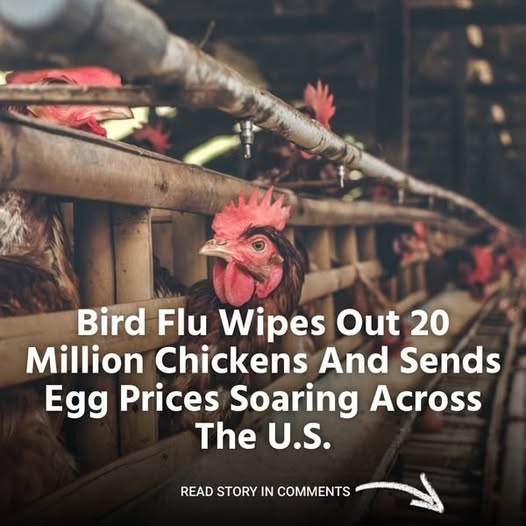
Understanding the Impact of Avian Influenza on U.S. Poultry and Egg Markets
Introduction
The United States is grappling with a significant avian influenza outbreak, leading to the culling of over 20 million egg-laying hens. This drastic measure has resulted in a notable increase in egg prices across the nation.
The Severity of the Avian Flu Outbreak
Rapid Spread and Immediate Consequences
Avian influenza, commonly known as bird flu, is a highly contagious virus affecting poultry populations. The current strain has spread swiftly, compelling authorities to cull millions of chickens to prevent further transmission. This action, while necessary for containment, has substantially disrupted egg production.
Economic Implications of Reduced Egg Supply
Supply Shortages Leading to Price Inflation
The sudden decrease in the egg-laying hen population has created a supply-demand imbalance. With fewer hens producing eggs, the limited supply has driven prices upward, affecting consumers and businesses alike.
Challenges in Restoring Egg Production
Time-Intensive Recovery Process
Replenishing the poultry population is not instantaneous. Farms must undergo thorough cleaning and implement stringent biosecurity measures before introducing new flocks. Additionally, it takes several months for new hens to reach egg-laying maturity, prolonging the period of reduced supply.
Consumer Responses to Rising Egg Prices
Adaptation and Alternative Choices
Faced with higher egg prices, consumers are exploring alternatives. Some are reducing egg consumption, while others are turning to substitutes or sourcing eggs from local producers less impacted by the outbreak.
Impact on Food-Related Businesses
Adjusting to Increased Operational Costs
Businesses that rely heavily on eggs, such as bakeries and restaurants, are experiencing increased costs. These establishments must decide whether to absorb the expenses, adjust pricing, or modify recipes to mitigate the financial impact.
USDA’s Efforts to Manage the Crisis
Implementing Control and Prevention Strategies
The U.S. Department of Agriculture is actively working to control the outbreak. Efforts include enforcing biosecurity protocols, monitoring poultry health, and providing guidance to farmers to prevent further spread.
The Role of Wild Birds in Virus Transmission
Challenges in Containment Due to Natural Carriers
Wild birds are natural carriers of avian influenza, complicating containment efforts. Their migratory patterns can introduce the virus to domestic flocks, making prevention a persistent challenge.
Biosecurity Measures for Poultry Farms
Best Practices to Prevent Infection
Farmers are encouraged to implement strict biosecurity measures, such as controlling farm access, regularly disinfecting equipment, and monitoring bird health to reduce the risk of infection.
Long-Term Solutions for Poultry Health
Research and Development of Vaccines
Investing in vaccine research is crucial for long-term prevention. Developing effective vaccines can help protect poultry populations from future outbreaks, reducing the need for culling.
The Fragility of the Food Supply Chain
Lessons Learned from the Outbreak
This incident highlights vulnerabilities in the food supply chain. It underscores the importance of preparedness and the need for strategies to manage such crises effectively.
Consumer Education on Food Safety
Understanding the Risks and Precautions
Educating consumers about avian influenza and food safety can help manage public concern. It’s important to communicate that properly cooked poultry and eggs remain safe for consumption.
Global Perspective on Avian Influenza
Comparative Analysis of International Responses
Examining how other countries handle avian influenza outbreaks can provide valuable insights. International collaboration and knowledge sharing are essential for developing effective control measures.
Environmental Factors Contributing to Outbreaks
Influence of Farming Practices and Climate Change
Intensive farming practices and environmental changes may contribute to the frequency of outbreaks. Sustainable farming and environmental stewardship are important considerations for prevention.
Policy Implications and Government Response
Evaluating Regulatory Frameworks
The outbreak prompts a reevaluation of existing policies related to poultry farming and disease control. Effective regulation and support for farmers are critical components of the response strategy.
Future Outlook for the Poultry Industry
Anticipating Changes and Preparing for Recovery
The poultry industry must adapt to the challenges posed by avian influenza. This includes investing in prevention, enhancing biosecurity, and developing contingency plans to ensure resilience.
Conclusion
The avian influenza outbreak has had profound effects on the U.S. poultry industry and egg markets. Addressing this crisis requires a multifaceted approach, including immediate containment efforts and long-term strategies to strengthen the resilience of the food supply chain.





